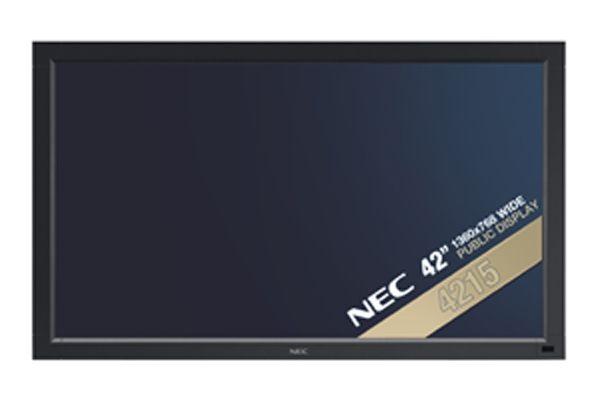As we start to assess the LCD4215's performance, we can no longer ignore a couple of disappointments with its core specification. First, its native resolution is an HD Ready 1,366x768 rather than a full HD 1,920 x 1,080. And second, its claimed contrast ratio is a frankly rather measly 800:1 compared with the 100,000:1 figures now common with domestic LCD TVs.
Regarding the resolution, though, most public display competitors at the LCD4215's price point also use a WXGA resolution, so it's not really coming up short relative to the market generally. And so far as the contrast ratio is concerned, for many users it will be the screen's brightness rather than its ability to present a deep black colour that will be more important.
The screen certainly is bright. Light video scenes and, especially, bright PC presentations and desktop environments are presented with impressive aggression for such an affordable screen, meaning it's capable of achieving readily that most fundamental requirement of good digital signage: getting noticed.
The screen also presents PC feeds or shows' created through the Digital Signage software editor with surprising crispness and detail for such a cheap screen, especially if you can match what you show to the screen's native resolution.
The screen's talent for sharpness extends, too, to its portrayal of HD video if that's of interest to you, bringing out clearly such HD niceties as pore detail and individual blades of grass.
The LCD4215's aggressive picture flavour extends additionally to its colours, which are intense and eye-catching. Their tones also work nicely with PC graphics, though we have to say they don't look especially natural when showing video sources. The PC/video colour balance line is always a tricky one for digital signage panels to tread, though, and given the LCD4215's target market and the relative simplicity of the material it's likely to show, we'd say that putting more emphasis on the PC colour palette probably makes sense.














